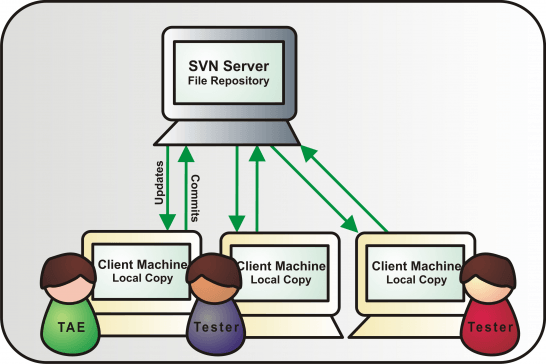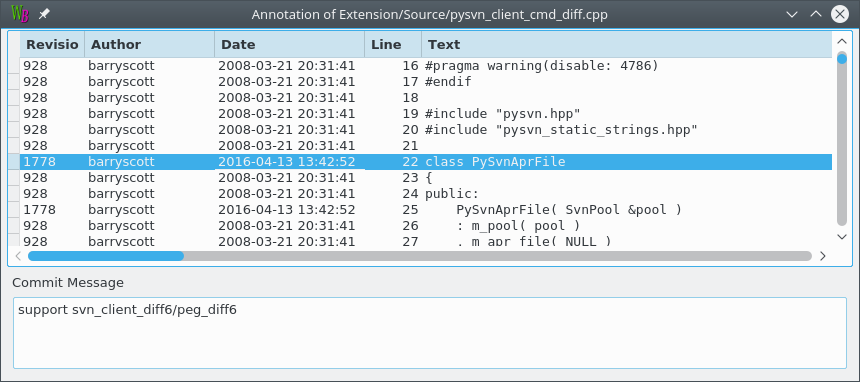
It is an open-source tool for version control. It is a centralized version control system. It is called as SVN because of its commands (its command name svn). The examples were done on windows, but should also work on other operating systems like Linux (Ubuntu) and Mac. This tutorial helps you to understand the Centralized version control system. The version control allows you to track and work together with your team members at the same workspace. It is developed to co-ordinate the work among programmers. It is designed to handle minor to major projects with speed and efficiency. SVN is an open-source centralized version control system that is available for everyone at zero cost. Our SVN tutorial is designed for beginners and professionals.


provides support for the official Subversion client when accessing -hosted repositories.SVN tutorial provides basic and advanced concepts of SVN. Any SVN operations that you want to run should be run from within the ~/working_copy directory to simulate the same experience you would have from within the working copy you would maintain for any SVN repository (be it on or the test repository you configured following the above steps). With this configured, you can delete the entire repository directory and start from scratch, if needed. $ mkdir ~/ working_copy $ cd ~/ working_copy $ svn co file : /// svnroot A svnroot / src A svnroot / src / foo A svnroot / src / bar Checked out revision 1. # Create a working copy from which to make changes and check them # back into the repository, etc. $ mkdir ~/ svnroot # Initialize the repository $ svnadmin create / svnroot # Go to the directory that contains the content you want to put # into a SVN module, in this case, the ~/source directory $ cd ~/ source # Perform a SVN import $ svn import file : /// svnroot - m “ initial import ” Adding src Adding src / foo Adding src / bar Adding ~ svnroot Committed revision 1. # The following assumes /svnroot is a safe location for the # SVN repository to be stored, change accordingly # an alternate location. Subversion repository read access is provided to everyone, without the need to authenticate. If prompted for a password, enter the password associated with your account. In the following usage examples, replace PROJECTNAME with the UNIX group name for the project whose repository you are accessing.
#Subversion svn how to#
The following resources include command-line examples on how to use Subversion: Subversion is a complex tool, designed to be used by software developers.
#Subversion svn portable#
URLs for -hosted Subversion repositories take the form (replacing PROJECTNAME with the UNIX group name of the project): įor example, the Subversion repository for the Portable Apps project would be at: Basic usage The official Subversion client uses a URL to access the Subversion repository. Binaries for other platforms are available from the Subversion team. The official Subversion client is included with Linux and BSD. Windows users may alternately use the TortoiseSVN instructions client, which is GUI-based.


The official SVN client is a text-based command-line tool.
#Subversion svn mac os#
The official Subversion client is available for most Operating Systems, including Windows, Linux, BSD and Mac OS X. To retrieve data from a Subversion repository, you need a Subversion client. Subversion (SVN) is a source code management tool.


 0 kommentar(er)
0 kommentar(er)
